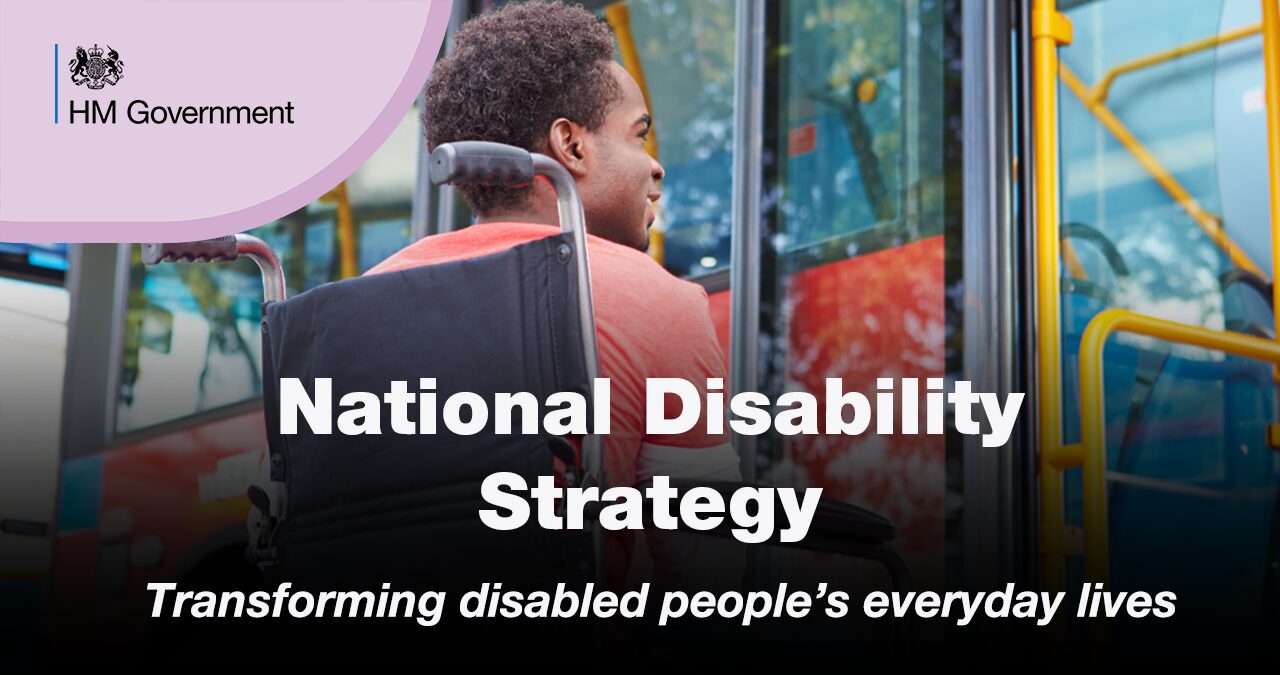
The National Disability Strategy sets out the government’s vision to improve the everyday lives of disabled people. It is important that disability is not a barrier to people living full, independent lives where they can reach their potential.
The strategy has been developed with the input of more than 14,000 disabled people, as well as disability organisations, businesses, policy experts and many others. Departments and agencies in every corner of government have set out how they will help bring about practical and lasting change to disabled people’s lives.
Read the strategy here.
Part 1 sets out immediate commitments we will make to improve every part of a disabled person’s day – from the moment someone gets up to the moment they go to bed.
These immediate steps will not by themselves lead to the transformative change we want to see in disabled people’s everyday lives, however, so the strategy does not stop there.
The longer-term ambition is to put disabled people at the heart of the design and delivery of all services.
Part 2 sets out ambitious changes to how the government works with and for disabled people into the future. We commit to putting disabled people at the heart of government policy-making and service delivery – laying the foundations for longer term, transformative change.
The strategy will ensure disability is well understood by UK government departments and that the needs and experiences of disabled people are central to policy making and always taken into account by staff. The government's future approach to disability will:
-
Ensure fairness and equality – empower disabled people by promoting fairness and equality of opportunities, outcomes and experiences, including work and access to products and services.
-
Consider disability from the start – embed inclusive and accessible approaches and services to avoid creating disabling experiences from the outset.
-
Support independent living – actively encourage initiatives that support all disabled people to have choice and control in life.
-
Increase participation – enable greater inclusion of a diverse disabled population in the development and delivery of services, products and policies.
-
Deliver joined up responses – work across organisational boundaries and improve data and evidence to better understand and respond to complex issues that affect disabled people
Finally, Part 3 summarises the actions each government department will take, with ministerial champions setting out their personal commitment to the strategy.
There is clearly huge breadth to the challenges that disabled people experience every day. Responsibility for tackling these challenges spans many different government departments. To advance the objectives of the strategy, individual departments are setting out their plans in a number of the areas that disabled people have told us are key to improving their quality of life. These include:
-
the Health and Disability Green Paper Shaping Future Support, led by the Department for Work and Pensions (DWP), setting out proposals to make the disability benefits system easier to access and navigate
-
the government response to the Health is Everyone’s Business consultation (DWP and the Department for Health and Social Care (DHSC))
-
the Department for Education’s (DfE) publication of the findings of the Special Educational Needs and Disabilities (SEND) Review and DHSC’s refreshed Autism Strategy
This strategy does not ignore the need for social care reform, which will be led by DHSC with proposals published later this year. We present what we have heard about the importance of this support to many disabled people and point to longer-term reform efforts, led by DHSC, throughout this strategy.


